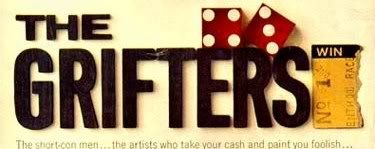Walmart Gift Card Thief Gets 10 Years

 The Daily Grifter
, Posted in
Business Scams
,
Con Artists
,
con men
,
Gift Card Scam
,
grifters
,
Scammers
,
Scams
,
swindlers
,
Timothy Truong
,
Walmart
,
0 Comments
The Daily Grifter
, Posted in
Business Scams
,
Con Artists
,
con men
,
Gift Card Scam
,
grifters
,
Scammers
,
Scams
,
swindlers
,
Timothy Truong
,
Walmart
,
0 Comments
Our long national nightmare is over: The Wal-Mart gift card thief is behind bars.
Timothy Truong was sentenced to 10 years in prison Tuesday for a gift card scheme that spanned more than a decade, according to the Sacramento Bee.
Truong stole gift cards, copied their electronic data, manufactured duplicate cards, and returned the cards to the store. A computer database would alert Truong when the legitimate cards had been activated, and he would then swoop in and use his duplicate cards on merchandise before customers had a chance to use theirs.
Truong ran this scam at Lowe's, Borders, and Safeway, but was apprehended two years ago at a California Wal-Mart.
At the time he'd already been convicted of gift card hijackings in Nevada, Nebraska, Pennsylvania, Georgia, and Utah, for incidents dating back to 1992. He was also facing charges in New Jersey.
Security personnel recognized Truong when he arrived at the Yuba City Wal-Mart, and called police. Truong escaped to his SUV and a chase ensued, but Truong eventually crashed his vehicle into two other cars. He then fled to another store, where he punched a customer, but was eventually subdued and arrested. He has been in jail ever since.
In Truong's SUV, police found more than 3,800 gift cards, two laptop computers and an electronic card reader, a card printer, acetone, maps marked with locations of Wal-Mart, Lowe's and Borders stores, 4,000 gift card numbers, and recently purchased merchandise.
The Modern Con Man: How to Get Something for Nothing
LRG The Pros and Cons Thermal Zip Up Hoody,Sweatshirts for Men, Small,Black
So Dark the Con of Man
The Big Con: The Story of the Confidence Man
I'm a Con Man I'm a Thief























